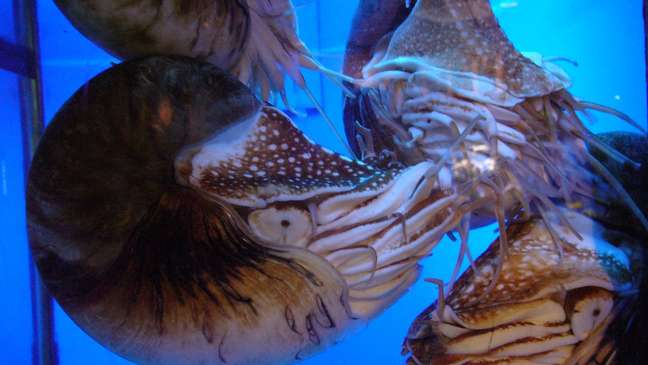Many animals are called “living fossils”, species that have changed almost nothing in millions of years. Which has been around the planet the longest?
When observing crocodiles, crustaceans or even insects that existed millions of years ago, you may have wondered: which species of animal has been on earth the longest? Between living fossils and close relatives of extinct creatures, it’s hard to find a satisfactory answer, but science knows some animals that haven’t changed much over the centuries, such as the tadpole shrimp (Triops cancriformis), elected by Guinness World Record, in 2010, as the longest living creature on the planet.
- Living fossil! Rare and ancient alligator fish mysteriously found in the United States
- Living Fossils | Discover animals that haven’t changed in hundreds of millions of years
The point is that the world is constantly changing, from the level of atmospheric oxygen to the temperature of the seas, and also the spend some time🇧🇷 This generates a constant adaptation of species living in the most diverse environments, both to better resist the region’s climate, and to escape predators or capture their prey more efficiently.

The current pioneer: changed or not changed?
The notostraca, or tadpole shrimp, is a creature sporting a crustacean carapace whose first fossils date back to the Triassic period, from 251.9 million to 201.3 million years ago. Their body is shaped like a shovel and, curiously, is perfect for digging the bottom of the temporary ocean pools in which they live. Looking from the outside, it really seems to us that the animal has not changed at all millions of years🇧🇷
Studies done since 2010, however, prove it T.cancriformis they kept changing under their shells, diverging in ways imperceptible to the human eye and detectable only by DNA testing. The specific species we see inhabiting the seas today are only descendants of the tadpole shrimp of the past, retaining the same shape for up to 25 million years — more conservative research places them at just 2.6 million years ago.
Other famous living fossils, one might think, can compete with notostraca, can’t they? For those interested in the subject, it is easy to remember the coelacanth, a species of fish that was thought to be extinct since the Cretaceous period (66 million years ago) when its fossils they were found in the 1800s. In 1938, a live coelacanth was caught off the coast of South Africa, closely resembling its 400-million-year-old ancestors.
Well, coelacanths turned off in fact, in fact, or at least the ancients did, hundreds of millions of years. Current living species are only 20 to 30 million years old, as is another competitor, the horseshoe crab, a species that is 480 million years old. Oldest living today (Tachipleo) they are actually 25 million years old.
How to define a living fossil?
The big problem is to define exactly where the line of species change could be drawn, since the definition of mutations can be transmitted from one generation to another without major differences for a long time, which is complicated, all the more so when genetically similar species they mate, generating animal hybrids. Based on fossil studies, scientists estimate that a species could last between 500,000 years and 3 million years before being replaced by a descendant with different adaptations or going extinct.
In addition to competition between species consuming the same type of food in a shared space and the need to escape predators, evolving species are also at the mercy of their environment. When its habitat experiences a sudden and considerable change in temperature or ecosystem, the species is forced to migrate to a similar location or to adapt: otherwise it will perish, quickly becoming extinct.
This constant shift in species dynamics makes it difficult to consider any specific animal a “living fossil” or species that has lived for many millions of years, since it implies the idea that it has stopped evolving, which is never really true. The way out? Changing the definitions of the term, as evolutionary biologist Africa Gómez proposes. it is better to use “living fossil” as a term to define species with specific characteristics, with slower evolution rates and some constant evolutionary traits.
Source: PEERJ🇧🇷 PLoS One🇧🇷 MP Evolution🇧🇷 American scientist through living science
Trending on Canaltech:
- Analysis of the 550-year-old letter could reveal the secrets of Vlad Dracula the Impaler
- Prime Video releases in the week (12/15/2022)
- Top 10 Most Watched Movies of the Week (12/17/2022)
- HBO Max Releases for the Week (12/14/2022)
- Kinesthesia or synesthesia? understand the difference
🇧🇷The best content in your email for free. Choose your favorite Terra newsletter. Click here!
Source: Terra
Camila Luna is a writer at Gossipify, where she covers the latest movies and television series. With a passion for all things entertainment, Camila brings her unique perspective to her writing and offers readers an inside look at the industry. Camila is a graduate from the University of California, Los Angeles (UCLA) with a degree in English and is also a avid movie watcher.






